How to Know How Much Power Your Device Uses
In today’s tech-driven world, knowing how much power your devices consume is essential. Whether you're trying to save on your electricity bill, optimize an off-grid solar setup, or choose the right battery backup, understanding your devices’ power usage gives you control and insight. This guide breaks down all the details of calculating, measuring, and managing your electrical consumption, so you’ll always know exactly how much power your device uses.
- Why Understanding Power Consumption Matters
- Power Basics Explained
- How to Measure Power Consumption of Any Device
- Calculating Power for Common Household Devices
- Power Consumption Over Time: Real-World Examples
- Power Measurement in Battery-Powered Devices
- How to Estimate Power Without a Meter
- Tools and Apps That Help Monitor Power Use
- Optimizing Power Usage for Energy Savings
- Power Consumption and Backup Power Planning
- Frequently Asked Questions About Device Power Usage
- Final Tips for Monitoring and Managing Device Power
- Know the Power Your Device Uses and Take Control
Why Understanding Power Consumption Matters
Power Awareness Leads to Energy Efficiency
Understanding how much power your device uses isn’t just about numbers—it’s about behavior. Most households unknowingly waste electricity. A simple awareness of power consumption can lead to better choices, such as turning off unused electronics, upgrading to energy-efficient appliances, or designing smarter systems.
The Role of Power in Off-Grid Systems
For solar users or backup systems with batteries, every watt counts. If you miscalculate how much power your device consumes, you risk overloading your system or draining your battery too soon. Getting an accurate idea of device usage is fundamental to designing a reliable setup.
Power Basics Explained
What Is Electrical Power?
Electrical power is the rate at which an appliance or device consumes energy. It’s measured in watts (W) and calculated with this formula:
Power (W) = Voltage (V) × Current (A)
For example, if a laptop runs at 19V and draws 2.5A, it uses:
19V × 2.5A = 47.5W
Units of Power and Energy
Watts (W): Instantaneous power
Kilowatts (kW): 1,000 watts
Kilowatt-hours (kWh): Power used over time. For instance, a 100W bulb running for 10 hours = 1 kWh.
>>See also How to Determine the Minimum Charging Current for a 200Ah Battery
How to Measure Power Consumption of Any Device
Use a Kill-A-Watt or Plug-in Power Meter
One of the easiest ways to know how much power your device uses is by plugging it into a Kill-A-Watt meter. It displays real-time power, voltage, current, and energy usage over time.
Check the Device Label
Look for a sticker or engraving near the power cord. It might read something like:
120V ~ 1.5A = 180W
19V --- 3.42A = 64.98W
These are manufacturer-rated max power figures, but actual usage may vary.
Use a Clamp Meter or Smart Circuit Breaker
For hardwired devices like ovens or HVAC systems, a clamp meter can be clamped around the live wire to measure current. Combined with voltage, it gives you power.
Smart circuit breakers or whole-house monitors like Sense or Emporia Vue also show individual device power draw in real time.
Calculating Power for Common Household Devices
Laptop or Desktop Computers
Laptops: 30W–90W while operating; around 1W in standby
Desktops: 200W–600W depending on GPU/CPU load
Multiply usage by hours per day for kWh consumption.
TVs and Entertainment Systems
LED TVs: 40W–120W
Home Theater Systems: 150W–400W
Game Consoles: 70W–180W
Understanding their power usage helps determine backup battery size or solar inverter load.
Kitchen Appliances
Microwave: 900W–1500W
Refrigerator: 100W–250W (average cycling)
Coffee Maker: 800W–1500W
Toaster Oven: 1200W–1800W
Kitchen appliances can be power hogs. Use during solar peak hours to conserve stored energy.
Power Consumption Over Time: Real-World Examples
Scenario 1: Using a Laptop 8 Hours a Day
Let’s say your laptop uses 60W:
60W × 8 hours = 480Wh = 0.48kWh/day
Monthly: 0.48kWh × 30 = 14.4kWh/month
Scenario 2: Watching TV for 4 Hours Daily
A 100W TV used for 4 hours:
100W × 4 = 400Wh = 0.4kWh/day
In a month: 0.4kWh × 30 = 12kWh/month
Knowing these values helps forecast your electricity bill and size your backup systems correctly.
Power Measurement in Battery-Powered Devices
DC Devices and Battery Runtime
To calculate how much power a battery-powered device uses:
Find the battery voltage (e.g., 12V)
Measure or estimate current (e.g., 3A)
Then:
12V × 3A = 36W
For a 100Ah battery at 12V:
12V × 100Ah = 1,200Wh or 1.2kWh
So that device could run:
1,200Wh / 36W ≈ 33.3 hours
Consider Efficiency Losses
Inverter losses (typically 10–15%) mean you should oversize your battery and solar array. Accurate power measurement ensures realistic expectations.
How to Estimate Power Without a Meter
If you don’t have a power meter, you can still estimate power:
Check device label
Multiply voltage by current
If only amperage at 120V is shown (e.g., 1.2A):
1.2A × 120V = 144W
For multiple devices, add all their wattages for total draw.
This method isn’t 100% accurate but provides a useful ballpark figure.
Tools and Apps That Help Monitor Power Use
Plug-and-Play Monitors
Kill-A-Watt Meter
TP-Link Kasa Smart Plug (with energy monitor)
These show device-level power usage in real time.
Whole-House Power Monitoring Systems
Sense Energy Monitor
Emporia Vue
Neurio
These systems track every circuit and some can identify devices by signature.
Mobile Apps
Most smart devices now come with apps that show power use over time. This is helpful for spotting “vampire” devices drawing power even in standby mode.
Optimizing Power Usage for Energy Savings
Unplug Idle Devices
Devices like chargers, printers, or microwaves often draw phantom power. Unplugging them or using a smart power strip helps reduce waste.
Use Energy-Efficient Appliances
Upgrade to:
LED lights (5W vs 60W incandescent)
Inverter AC units
High-efficiency refrigerators
Knowing how much power your device uses helps justify investment in efficient alternatives.
Schedule High-Power Activities
Run washing machines, water heaters, or charging stations during solar peak times or off-peak utility hours to lower cost.
>>See also How Long a 5kWh Battery Will Last
Power Consumption and Backup Power Planning
Inverter and Battery Sizing
Knowing how much power your devices use lets you:
Size your inverter correctly (peak wattage)
Choose the right battery (daily energy draw)
Avoid system shutdowns due to overloads
For example:
If you use 5kWh/day, a 48V 100Ah battery gives you 4.8kWh (ideal match)
With inverter efficiency of 90%, actual usable is 4.3kWh
Solar Charging Needs
To recharge a 4.8kWh battery daily:
Use 6× 400W solar panels = 2,400W system
Assuming 4 solar hours/day → 2.4kW × 4h = 9.6kWh production
Plenty of margin for cloudy days or inefficiencies.
Frequently Asked Questions About Device Power Usage
Does standby power matter?
Yes. A DVR using 20W 24/7 = 0.48kWh/day = ~14.4kWh/month.
Can I run my fridge on solar?
Yes, if you size your inverter and battery correctly. A 150W fridge running 12 hours/day = 1.8kWh/day.
Is power usage different from energy usage?
Power is instantaneous (watts), energy is over time (watts × hours = kWh).
Final Tips for Monitoring and Managing Device Power
Use power meters regularly
Create an energy audit spreadsheet
Replace outdated devices
Use timers or smart plugs for automation
Integrate your data into energy dashboards if possible
With time, you’ll intuitively understand which devices are power-hungry and which ones are efficient.
Know the Power Your Device Uses and Take Control
In the last 100 words, it’s worth repeating: knowing the power your device uses is crucial for smarter energy decisions. Whether you're off-grid, trying to lower your electric bill, or sizing a battery backup, this knowledge gives you power—literally and financially. Start by measuring your top-used devices, evaluate total consumption, and implement smart habits. Tools like plug-in meters, smart plugs, and whole-house monitors make this process easier than ever. With a clear understanding of how much power your device uses, you’re empowered to create a more efficient and sustainable lifestyle.

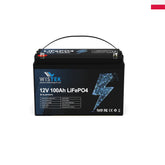
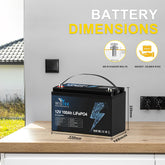




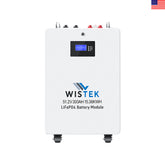
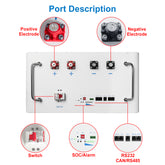
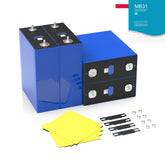

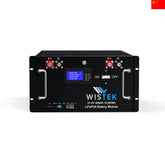
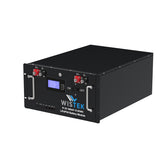



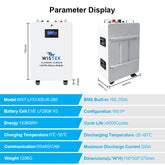
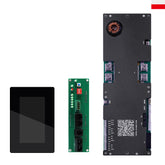

Leave a comment
Please note, comments need to be approved before they are published.